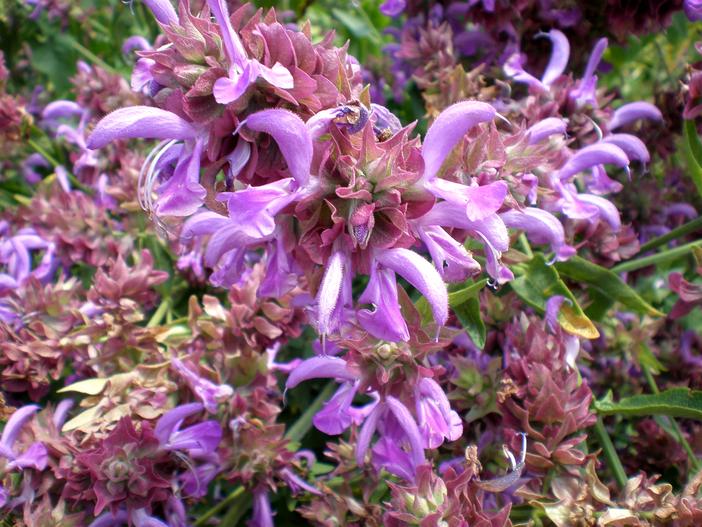Canary Island Sage
(Salvia canariensis)
Canary Island Sage (Salvia canariensis)
/
/

Consultaplantas
CC BY-SA 4.0
Image By:
Consultaplantas
Recorded By:
Copyright:
CC BY-SA 4.0
Copyright Notice:
Photo by: Consultaplantas | License Type: CC BY-SA 4.0 | License URL: https://creativecommons.org/licenses/by-sa/4.0 | Uploader: Consultaplantas | Publisher: Wikipedia Commons









































Estimated Native Range
Summary
Salvia canariensis, commonly known as Canary Island Sage, is an erect perennial shrub native to the rocky, arid regions of the Canary Islands. It can reach 2.0–2.3 meters in height and 1.5 meters in width in a single season, showcasing its rapid growth rate. The plant is characterized by its hastate, pale green leaves and stems, as well as the undersides of the leaves, which are covered with long white hairs. From late spring to early fall, it produces striking flowers that range in color from pale purple to deep purple magenta, which are highly attractive to pollinators such as bees and hummingbirds.
Canary Island Sage is valued for its drought tolerance and its ability to thrive in coastal conditions, making it an excellent choice for xeriscaping and Mediterranean gardens. It is often used as a specimen plant or in mass plantings for a dramatic effect. The plant prefers full sun exposure and is tolerant of a range of soil types, provided they have good drainage. While generally low-maintenance, it may require pruning to maintain a tidy appearance and to promote vigorous growth. It is not known to have significant disease or pest problems, but it can be sensitive to overwatering and root rot.CC BY-SA 4.0
Canary Island Sage is valued for its drought tolerance and its ability to thrive in coastal conditions, making it an excellent choice for xeriscaping and Mediterranean gardens. It is often used as a specimen plant or in mass plantings for a dramatic effect. The plant prefers full sun exposure and is tolerant of a range of soil types, provided they have good drainage. While generally low-maintenance, it may require pruning to maintain a tidy appearance and to promote vigorous growth. It is not known to have significant disease or pest problems, but it can be sensitive to overwatering and root rot.CC BY-SA 4.0
Plant Description
- Plant Type: Herb
- Height: 6-7 feet
- Width: 3-4.5 feet
- Growth Rate: Rapid
- Flower Color: Pink, Purple
- Flowering Season: Spring, Summer
- Leaf Retention: Evergreen
Growth Requirements
- Sun: Full Sun
- Water: Low, Very Low
- Drainage: Medium, Fast
Common Uses
Bee Garden, Bird Garden, Butterfly Garden, Deer Resistant, Drought Tolerant, Fragrant, Hummingbird Garden, Low Maintenance, Rabbit Resistant, Showy Flowers
Natural Habitat
Rocky, arid regions of the Canary Islands
Other Names
Common Names: Kanariesalvia
Scientific Names: , Salvia canariensis, Salvia canariensis var. candidissima, Salvia lanata, Salvia canariensis var. villosa, Salvia canariensis var. albiflora, Salvia canariensis f. candidissima, Salvia canariensis f. albiflora, Schraderia hastata, Sclarea tomentosa,
GBIF Accepted Name: Salvia canariensis L.